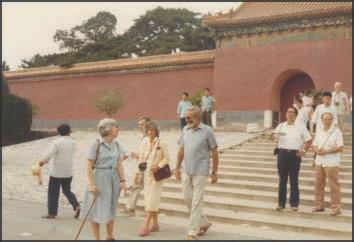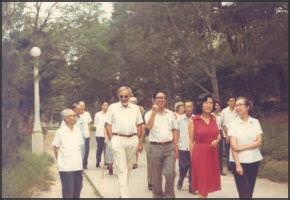by Shing-Tung Yau
Shing-Tung Yau reflects on Raoul Bott’s influence on him — mathematical, personal, and professional.1
I first met Raoul Bott about forty years ago when he briefly visited Shiing-Shen Chern and the Berkeley mathematics department. Bott was a great and famous mathematician then, while I was merely a graduate student. My teacher, Chern, was interested in his paper on the localization of Chern numbers for Kähler manifolds and went through it several times during a seminar. I was, of course, very impressed by Bott’s elegant theory. Little did I know that much later this theory would be developed into an extremely valuable tool for computations in geometry. I used this theory myself, along with my coauthors, Bong Lian and Kefeng Liu, in solving the mirror symmetry conjecture (independently solved by Givental), which was part of the broader theory of Calabi–Yau manifolds.

In 1971 there was a special program on foliations led by Bott at the Institute for Advanced Study in Princeton. Since I was graduating from Berkeley, the IAS was an attractive place for me to go. When I applied to several universities, I got a few good offers. Although I could have gotten a higher salary elsewhere, Chern urged me to spend some time at the IAS, partly because of Bott’s program. So I went and enjoyed my year tremendously. At the IAS, I became interested in ways of constructing metrics with special curvature properties and applying them to solve questions in topology. For example, I thought about constructing metrics with positive scalar curvature to create obstructions for a nonabelian group action on a manifold. (I later wrote a paper with Lawson based on this idea.) By studying the wedge product of differential forms under a circle action, I found obstructions to the existence of a topological circle action on a manifold; these obstructions exist in the cohomology ring of the manifold. I showed my work on group actions to Raoul. He was pleased, and his encouragement was really important to a young man like me.
Later on, Raoul had many more interactions with me. After I proved the Calabi conjecture and the positive mass conjecture, the latter with Richard Schoen, he tried hard to convince me to come to Harvard, which offer I did not accept at first. During that process he invited my wife and me to his home for dinner several times. At the time, he was the master of Dunster House at Harvard. It was inspiring to see how much time and energy he invested in college undergraduates. I was truly grateful for his hospitality during my visits to Harvard. In return, I tried to entertain him well when he visited Beijing at the invitation of Chern in 1980. During that visit I proposed the Chinese name Bo Le to him. Bo Le was a famous personage in Chinese history reputed to have the ability to recognize excellent horses, those that can run a thousand miles. Apart from the aptness of its meaning, the name was appropriate phonetically also: “Bo” is the Chinese surname closest to “Bott,” and “Le” is about as close to “Raoul” as a Chinese character can sound. Raoul told me he liked this Chinese name.

The pivotal moment of my life was the time when I was having some trouble in the mathematics department at the University of California in San Diego. I needed help with a decision. Raoul was visiting Berkeley, and I flew to Oakland to have dinner with him. After dinner we had a long discussion about my future. A true statesman, he laid out the pros and cons of what I should do. I felt greatly relieved after talking with him and made the most important decision of my career, which was to come to Harvard, a decision that I have never regretted.
Of course, I learned much more from Raoul during my years at Harvard, no less in statesmanship than in mathematics — he was extraordinarily skilled in handling departmental affairs. I felt truly sad when he passed away. I gave a talk on his life’s work at a Journal of Differential Geometry conference. In preparation for the talk, I researched his contributions to mathematics. I was amazed to learn how much he had accomplished and how much he had done that I did not know about.
Raoul certainly ranks among the most influential mathematicians of the last century. His work was deep, his vision far reaching, and his impact durable. May his spirit always be with us!